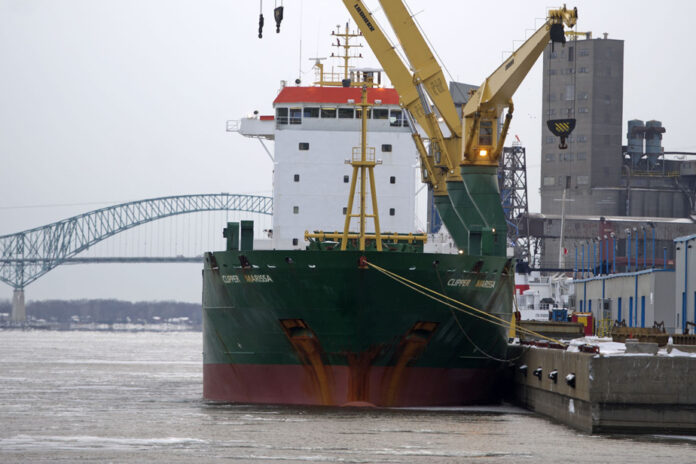The port of Trois-Rivières faces an urgent need to increase its capacity, while it is experiencing a record level of activity. Having been unable to launch the construction of Pier 21 in time, the port authority is bringing forward the reconstruction of Piers 16 and 17, which must be carbon neutral.
The year 2022 broke all activity records at the port of Trois-Rivières, which welcomed 242 ships and handled 4.3 million metric tons of goods. “We even had to refuse at least 750,000 tonnes, because ships wanted to transit, but we did not have the handling capacity,” says Gaétan Boivin, CEO of the port administration, who specifies that activity will remain strong in 2023 .
To support its development and expand its capacities, the Trois-Rivières port is ready to invest $140 million on the construction of Pier 21. This infrastructure, offering 716 m of quay, must extend over nearly 100,000 m2, making it possible to increase port capacity by almost 50%.
But the Pier 21 project is behind schedule. “Environmental studies are more complex and longer than expected,” explains Gaétan Boivin. This is because the expansion of the port would significantly increase the traffic of heavy vehicles, while having impacts on the natural environment. Although he hopes that the environmental studies will be completed within a year, the CEO does not intend to wait to increase handling capacities.
This is why the Port of Trois-Rivières has moved ahead with the reconstruction of quays 16 and 17, which are almost a century old. The port authority will call for tenders at the beginning of 2024 for this project estimated at more than $200 million, which will be completed over three years.
The reconstruction of the two platforms will involve their electrification. “We are taking advantage of this to make big gains in reducing greenhouse gas emissions, with less energy-consuming equipment,” says the CEO of the Port of Trois-Rivières. This is because the Port is committed to achieving carbon neutrality in 2050, by reducing its greenhouse gas emissions by 2% per year by 2030, then by 5% per year thereafter.
During this project, the port will have to maintain its transit capacity, in particular to serve the Alcoa aluminum smelter in Deschambault and grain delivery. At the same time, the Trois-Rivières port is not relaxing its efforts on the Pier 21 project, because the reconstruction of Piers 16 and 17 will not be enough.
Port development projects do not stop at the construction and reconstruction of quays. “We are working on more than sixty research projects aimed at improving productivity in the port,” underlines Gaétan Boivin. These projects are carried out with universities, the Innovation Maritime research center and Transport Canada.
The port authority wants to create a digital twin of the port. With such a tool representing activities virtually, “we could carry out simulations to identify promising projects, for example to find the most interesting vehicle routes without increasing greenhouse gas emissions”, illustrates Gaétan Boivin.















